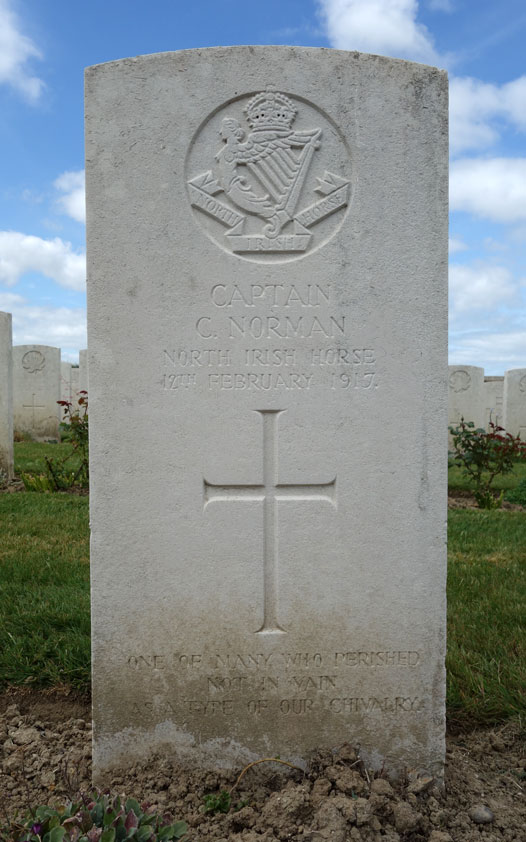![]() In memoriam
In memoriam ![]()
Captain Charles Norman, DL JP
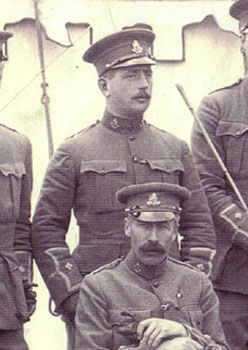
Charles Norman was born on 16 May 1879 at Glengollan, Fahan, County Donegal, the first of two children of land proprietor Thomas Norman DL JP and Annie Norman (née Norman). His mother died when he was just two years old, and his father just before his sixteenth birthday. At the time of the 1901 Census he was living at Carrontlieve, Fahan, and was recorded as a landed proprietor.
Norman was commissioned as a 2nd lieutenant in the North of Ireland Imperial Yeomanry on 17 July 1903, transferring to the newly formed North Irish Horse in July 1908. He was promoted to the rank of lieutenant on 6 February 1909, and captain on 22 April 1913.
On 17 November 1912 he married Helen Frances Mary Miller in the Londonderry Cathedral, a detachment of B (Londonderry) Squadron of the North Irish Horse attending the ceremony. Their only child, Helen Mary Florinda Anne, was born in Dublin on 11 September 1913.
On 20 July 1914 Norman resigned his commission in the North Irish Horse to take up a captaincy in the Reserve of Officers. On the outbreak of war he was attached to the 9th (Queen’s Royal) Lancers, going to France with the regiment on 16 August.
On 30 and 31 October 1914 the Lancers were thrown into the desperate trench fighting at Messines on the Ypres front, losing one officer and six other ranks killed, eight officers and 34 other ranks wounded, and two officer and three other ranks missing, out of a strength of around 150. Norman was one of the wounded. His commanding officer included him among those recognised "for exceptional good work" during the fighting.
On 14 February 1916 Norman joined the 5th Reserve Regiment of Cavalry. He was later attached to the Royal Horse Artillery. On the night of 2/3 February 1917, while attached to the 168th Brigade of the Royal Field Artillery near Courcelles-Hébutern-Puchevillers in France, he and another officer, Lieutenant Ainley, were accidentally injured when a hut in which they were sleeping caught fire.
According to the Broad Arrow newspaper of 7 March:
Lieut. Ainley had gone behind to the waggon lines for rest, and was sleeping with a fellow officer [Norman] in a bivouac of timber, corrugated iron, and canvas. During the night this building in some way caught fire, the other officer was overcome, and rendered insensible, whilst Lieut. Ainley, who dragged his friend to a place of safety, was badly burnt about the hands and feet, and also about the head. He was removed as quickly as possible to a casualty clearing station. He appeared to be progressing favourably, but pneumonia set in, and he passed away very quietly.
Norman's injuries prevented him from being removed to a base hospital. He died at No.3 Casualty Clearing Station on 12 February 1917.
A court of inquiry heard that prior to his death Lieutenant Ainley had stated that he had gone to bed and left two candles burning on the table for Captain Norman. He had no idea how the fire started. It was Captain Norman's habit to read in bed at night. He was a particularly drowsy person and would drop off to sleep at anytime even in a lull in a conversation. The court found that it was not possible to ascertain the cause of the fire, owing the the two principle witnesses being dead, but that all reasonable precautions against fire seemed to have been taken.
Captain Norman was buried at Puchevillers British Cemetery, Somme, France, grave III.B.10. The gravestone inscription reads:
CAPTAIN
C. NORMAN
NORTH IRISH HORSE
12TH FEBRUARY 1917.
ONE OF MANY WHO PERISHED
NOT IN VAIN
AS A TYPE OF OUR CHIVALRY.
His brother-in-law, Lieutenant Joseph Ewing Bruce Miller of the 1st Battalion, Royal Irish Rifles, had died of wounds on 24 May 1915. Norman’s wife, Helen Frances, died of pneumonia on 19 September 1918, aged just 27.
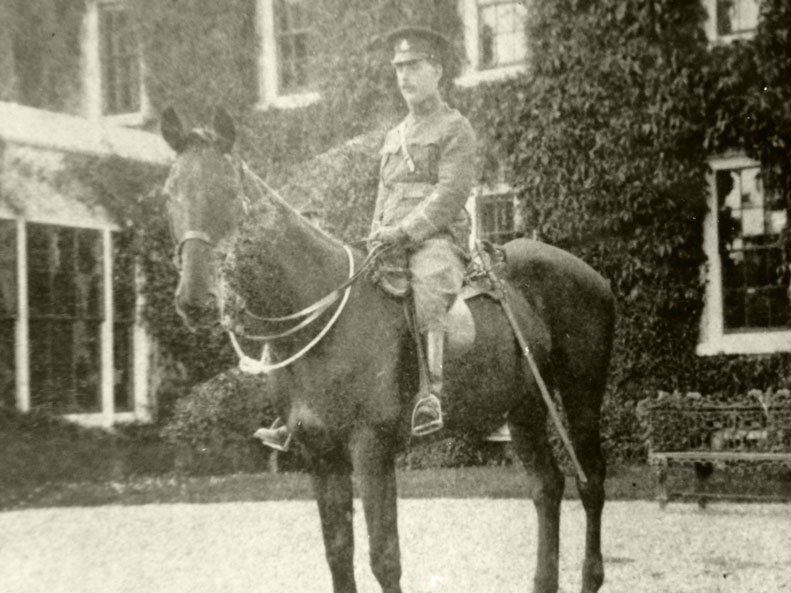
Norman at the front of the now demolished estate house at Glengollan in Fahan, Donegal. (Image courtesy of A. Markham)
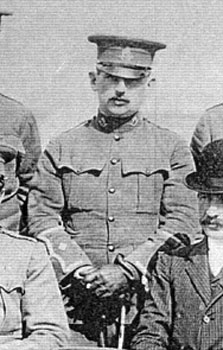
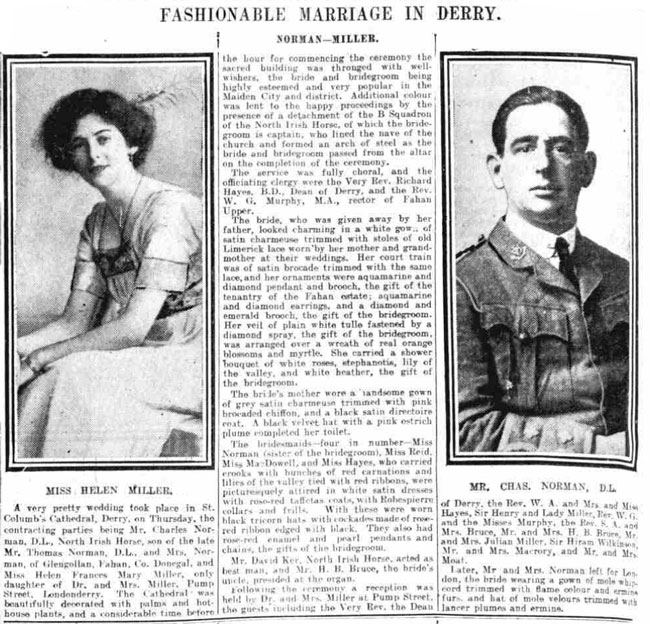
Larne Weekly Telegraph, 23 November 1912
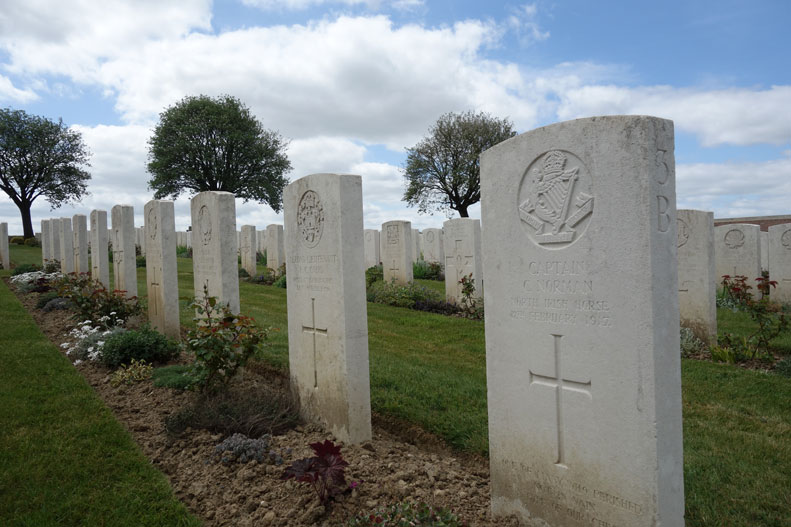
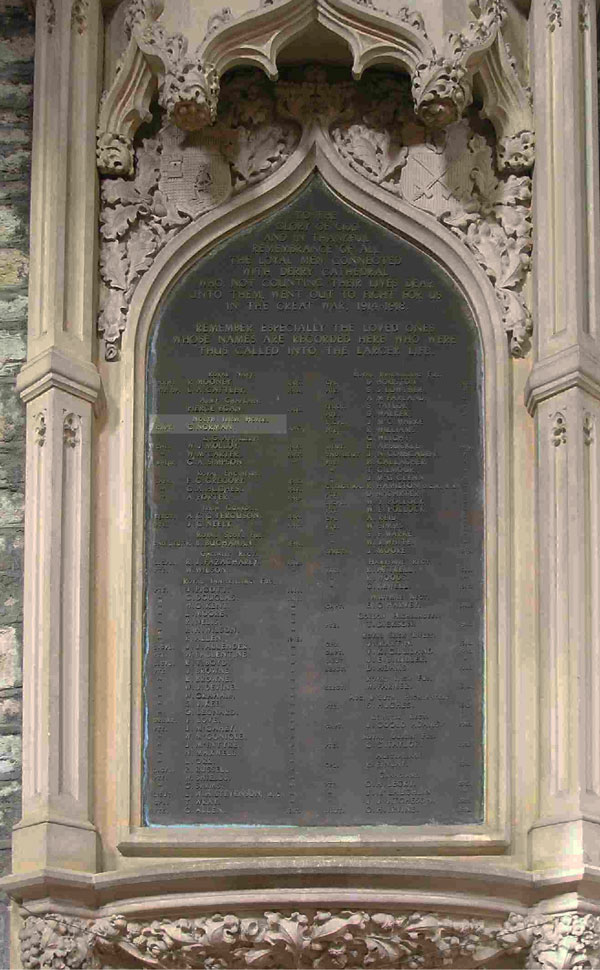
Great War Memorial, St Columb's Cathedral, Londonderry
Gravestone images Copyright © Phillip Tardif with all rights reserved as set out in this Use of Material policy. Images 1 and 4 show Norman with officers of the North of Ireland Imperial Yeomanry in 1904 and 1905. St Columb's image sourced from the Irish War Memorials website. Some of the above information sourced from the CWGC's site For Evermore: Stories of the Fallen.
This page last updated 22 March 2024.

